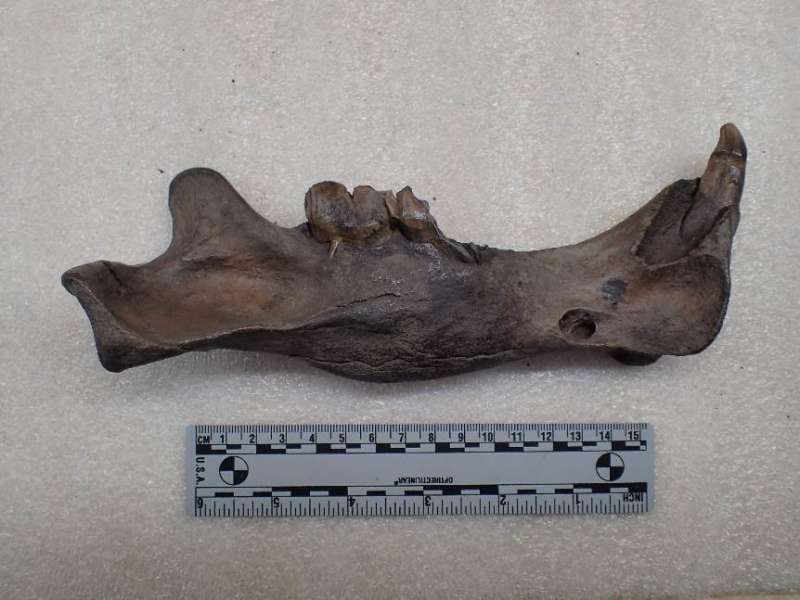Saber-toothed cats with oral injuries ate softer foods than their uninjured counterparts

Saber-toothed cats, the large felid predators that once roamed Southern California, may have eaten softer foods after suffering oral injuries, according to a new study. Microscopic damage patterns on teeth from fossilized cats show the injured predators transitioned to seeking softer prey, like flesh instead of bone, which healthy cats may have provided for them, according to the study.
Saber-toothed cats likely suffered injuries while felling large prey, according to the study's lead author, vertebrate paleontologist Larisa DeSantis from Vanderbilt University, Tennessee.
The cat's prey animals were larger 10,000 to 50,000 years ago, DeSantis says, and could have easily broken jaws or kicked teeth completely free from the socket, leading to subsequent and sometimes lethal infection. It's unlikely that cats with such severe injuries could take down large animals and consume their soft, fleshy meat, she says, or even survive long after the injury.
"The fact that they're eating food that really shouldn't be available to them unless they're being provided for, and that they're living with these injuries for prolonged periods of time suggests they're being provisioned food by other cats," she says. DeSantis will share her findings on Monday, 5 November, at the Geological Society of America Annual Meeting in Indianapolis, Indiana.
Microdamage patterns recorded in tooth enamel, like mountains and valleys in a topographic map, tell the history of an animal's diet. These patterns allow researchers to glean information like whether a predator was scavenging on bone or eating tougher foods like flesh. Anthropologists have pioneered the same technique to explore the diets of early human ancestors.
DeSantis and her colleagues compared the dental microwear patterns of injured versus uninjured cats, thanks to a large pathology collection available at the La Brea Tar Pits and Museum in Los Angeles, California. Many of the fossils show signs of prolonged infection and bone growth associated with healing—signs that the animals survived after what would have been fatal injuries if not part of a social group.
"What's really exciting about this," DeSantis says, "is that you see pretty clear evidence that they're surviving for longer. That in itself gives you evidence of potential care within the social group."
These findings further support the idea that saber-toothed cats were social animals, being an exception to the rule of non-sociality in the lion's share of felid species. Saber-toothed cats consumed both flesh from fresh kills and utilized carcasses.
"There is a lot of evidence that Smilodon was a social and gregarious animal," says Christopher Shaw, Collections Manager Emeritus at the La Brea Tar Pits and Museum and coauthor on the study, "which implies that they hunted together and fed at group kills. This study adds another provocative aspect to the sociability within this species and, for the first time, addresses new evidence regarding food options and feeding behaviors for injured members of the social group."
DeSantis's interest in this work began in an earlier study, where she found that man-eating lions may have turned to human prey, in part, because of similar oral injuries. Preserved teeth of confirmed, man-eating lions stored at the Field Museum of Natural History in Chicago, Illinois, showed patterns of wear that were similar to captive zoo lions, which ate soft foods consisting mostly of beef and horse meat.
More information: Sabertooth cats with toothaches: Impacts of dental injuries on feeding behavior in late Pleistocene smilodon fatalis (mammalia, felidae) from Rancho La Brea (Los Angeles, California) Geological Society of America Abstracts with Programs. Vol. 50, No. 6 DOI: 10.1130/abs/2018AM-322567 , gsa.confex.com/gsa/2018AM/webp … ram/Paper322567.html
Provided by Geological Society of America





















